Discover 20 hidden attractions, cool sights, and unusual things to do in Gillingham (United Kingdom). Don't miss out on these must-see attractions: Rochester Cathedral, Rochester Castle, and Upnor Castle. Also, be sure to include The Historic Dockyard Chatham in your itinerary.
Below, you can find the list of the most amazing places you should visit in Gillingham (England).
Table of Contents
Rochester Cathedral
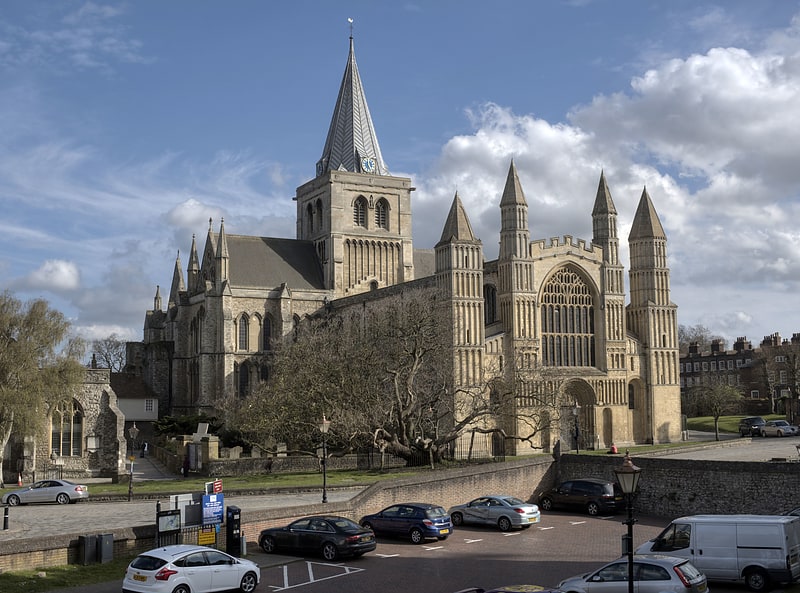
Norman edifice with a 14th-century door. Rochester Cathedral, formally the Cathedral Church of Christ and the Blessed Virgin Mary, is an English church of Norman architecture in Rochester, Kent.
The church is the cathedral of the Diocese of Rochester in the Church of England and the seat (cathedra) of the Bishop of Rochester, the second oldest bishopric in England after that of the Archbishop of Canterbury. The edifice is a Grade I listed building (number 1086423).[1]
Address: The Precinct, ME1 1SX Rochester (Rochester West)
Rochester Castle
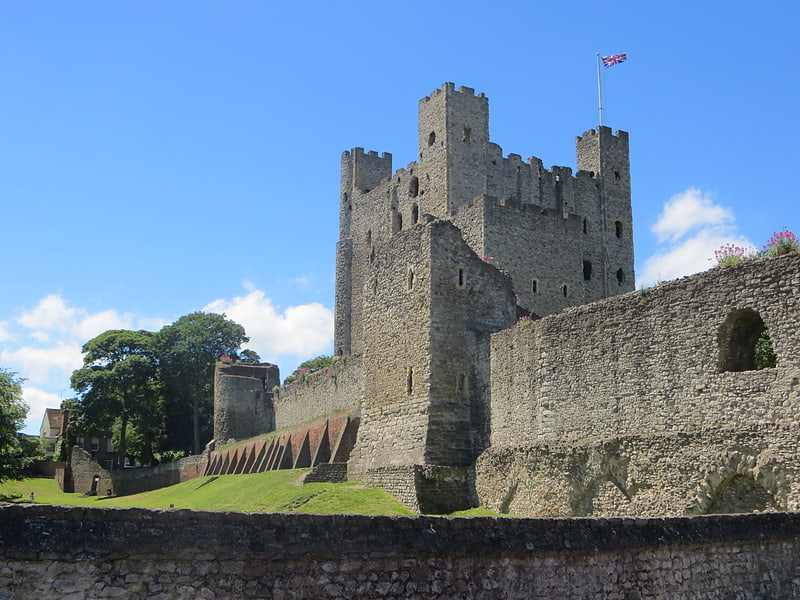
Historic Norman edifice. Rochester Castle stands on the east bank of the River Medway in Rochester, Kent, South East England. The 12th-century keep or stone tower, which is the castle's most prominent feature, is one of the best preserved in England or France.
Situated on the River Medway and Watling Street, Rochester served as a strategically important royal castle. During the late medieval period it helped protect England's south-east coast from invasion. The first castle at Rochester was founded in the aftermath of the Norman Conquest. It was given to Bishop Odo, probably by his half-brother William the Conqueror. During the Rebellion of 1088 over the succession to the English throne, Odo supported Robert Curthose, the Conqueror's eldest son, against William Rufus. It was during this conflict that the castle first saw military action; the city and castle were besieged after Odo made Rochester a headquarters for the rebellion. After the garrison capitulated, this first castle was abandoned.
Between 1087 and 1089, Rufus asked Gundulf, Bishop of Rochester, to build a new stone castle at Rochester. He established the current extent of the castle. Though much altered through the centuries, some parts of Gundulf's work survive. In 1127 King Henry I granted the castle to the Archbishop of Canterbury in perpetuity. William de Corbeil built the massive keep that still dominates the castle today. Throughout the 12th century the castle remained in the custody of the archbishops.
During the First Barons' War (1215–1217) in King John's reign, baronial forces captured the castle from Archbishop Stephen Langton and held it against the king, who then besieged it. The Barnwell chronicler remarked "Our age has not known a siege so hard pressed nor so strongly resisted". After resisting for just over seven weeks, the garrison surrendered. The castle had been greatly damaged, with breaches in the outer walls and one corner of the keep collapsed, and hunger eventually forced the defenders' hand. The castle did not stay under John's control for long: in 1216 it was captured by the French Prince Louis, who was the new leader of the baronial faction. John died and was succeeded by his son King Henry III in 1216; the next year, the war ended and the castle was taken under direct royal control.
Rochester was besieged for the third time in 1264 during the Second Barons' War (1264–1267). The castle's royal constable, Roger de Leybourne, held Rochester in support of Henry III. Rebel armies led by Simon de Montfort and Gilbert de Clare entered the city and set about trying to capture the castle. Again the castle's defenders resisted, this time with a different outcome. After a week, the rebel armies raised the siege in the face of relief from Henry himself. The garrison did not surrender, and the castle suffered extensive damage that was not repaired until the following century. The castle saw military action for the last time in 1381 when it was captured and ransacked during the Peasants' Revolt. As Rochester Castle fell out of use its materials were reused elsewhere and custodianship relinquished by the Crown. The castle and its grounds were opened to the public in the 1870s as a park. At various points during the 19th and 20th centuries repairs were carried out. The castle is protected as a Grade I listed building and Scheduled Monument. Today the ruins are in the guardianship of English Heritage and open to the public.[2]
Address: Castle Hill, ME1 1SW Rochester (Rochester West)
Upnor Castle

Castle in Upper Upnor, England. Upnor Castle is an Elizabethan artillery fort located on the west bank of the River Medway in Kent. It is in the village of Upnor, opposite and a short distance downriver from the Chatham Dockyard, at one time a key naval facility. The fort was intended to protect both the dockyard and ships of the Royal Navy anchored in the Medway. It was constructed between 1559–67 on the orders of Elizabeth I, during a period of tension with Spain and other European powers. The castle consists of a two-storeyed main building protected by a curtain wall and towers, with a triangular gun platform projecting into the river. It was garrisoned by about 80 men with a peak armament of around 20 cannon of various calibres.
Despite its strategic importance, the castle and the defences of the Thames and Medway were badly neglected during the 17th century. The Dutch Republic mounted an unexpected naval raid in June 1667, and the Dutch fleet was able to breach the defences, capturing two warships and burning others at anchor in the river at Chatham, in one of the worst defeats suffered by the Royal Navy. Upnor Castle acquitted itself better than many of the other defensive sites along the upper Medway, despite its lack of provisioning. Gun fire from the fort and from adjoining emplacements forced a Dutch retreat after a couple of days, before they were able to burn the dockyard itself.
The raid exposed the weaknesses of the Medway defences and led to the castle losing its role as an artillery fortification. New and stronger forts were built further downriver over the following two centuries, culminating in the construction of massive casemated forts such as Garrison Point Fort, Hoo, and Darnet Forts. Upnor Castle became a naval ammunition depot, storing great quantities of gunpowder, ammunition, and cannon to replenish the warships that came to Chatham for repair and resupply. It remained in military use until as late as 1945. The castle was subsequently opened to the public and is now an English Heritage property.[3]
Address: Upnor Castle High Street, ME2 4XG Rochester (Frindsbury Extra)
The Historic Dockyard Chatham

Museum in Chatham, England. Chatham Historic Dockyard is a maritime museum on part of the site of the former royal/naval dockyard at Chatham in Kent, South East England.
Chatham Dockyard covered 400 acres (1.6 km²) and was one of the Royal Navy's main facilities for several hundred years until it was closed in 1984. After closure the dockyard was divided into three sections. The easternmost basin was handed over to Medway Ports and is now a commercial port. Another slice was converted into a mixed commercial, residential and leisure development. 80 acres (324,000 m²), comprising the 18th-century core of the site, was transferred to a charity called the Chatham Historic Dockyard Trust and is now open as a visitor attraction. It claims to be the world’s most complete dockyard of the Age of Sail.[4]
Address: Church Lane, ME4 4TZ Chatham (Chatham)
Priestfield Stadium
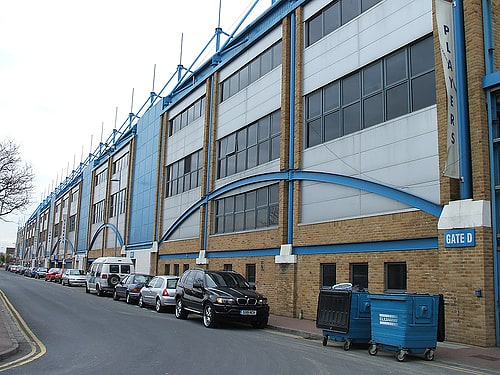
Stadium in Gillingham, England. Priestfield Stadium is a football stadium in Gillingham, Kent. It has been the home of Gillingham Football Club since the club's formation in 1893, and was also the temporary home of Brighton & Hove Albion Football Club for two seasons during the 1990s. The stadium has also hosted women's and youth international football matches and a London Broncos rugby league match.
The stadium underwent extensive redevelopment during the late 1990s, which has brought its capacity down from nearly 20,000 to a current figure of 11,582. It has four all-seater stands, all constructed since 1997, although one is only of a temporary nature. There are also conference and banqueting facilities and a nightspot named The Factory. Despite having invested heavily in its current stadium, Gillingham F.C. has plans to relocate to a new stadium.[5]
Address: Redfern Ave, ME7 4DD Gillingham (Gillingham)
St Nicholas Church

St Nicholas Church is a former parish church in Rochester, Kent, England, next to Rochester Cathedral. It is now the offices of the Board of Education of the Diocese of Rochester. It is a Grade I listed building.[6]
Address: Boley Hill, ME1 1SL Rochester (Rochester West)
Cooling Castle
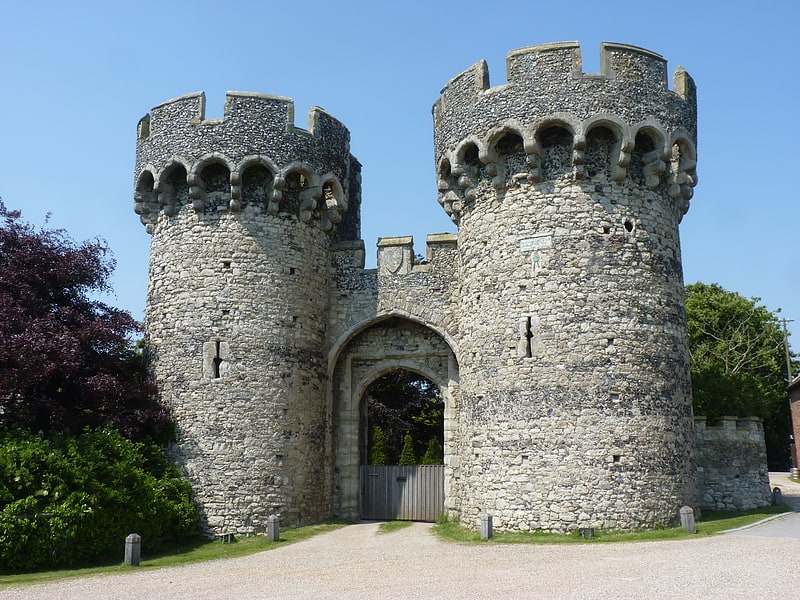
Castle in Cooling, England. Cooling Castle is a 14th-century quadrangular castle in the village of Cooling, Kent on the Hoo Peninsula about 6 miles north of Rochester. It was built in the 1380s by the Cobham family, the local lords of the manor, to guard the area against French raids into the Thames Estuary. The castle has an unusual layout, comprising two walled wards of unequal size next to each other, surrounded by moats and ditches. It was the earliest English castle designed for the use of gunpowder weapons by its defenders.
Despite this distinction, the use of gunpowder weapons against the castle proved devastating. It was captured after only eight hours when Sir Thomas Wyatt besieged it in January 1554 during his unsuccessful rebellion against Queen Mary. His attack badly damaged the castle, and it was subsequently abandoned and allowed to fall into disrepair. A farmhouse and outbuildings were constructed among the ruins a century later. Today the farmhouse is the home of the musician Jools Holland, while the nearby barn is used as a wedding venue.[7]
Eastgate House

Historical landmark in Rochester, England. Eastgate House is a Grade I listed Elizabethan townhouse in Rochester, Kent, England. It is notable for its association with author Charles Dickens, featuring as Westgate in The Pickwick Papers and as the Nun's House in The Mystery of Edwin Drood. Now a Dickens Museum, the grounds of Eastgate House contain the Swiss chalet in which Dickens penned several of his novels.[8]
Address: High St, Gillingham (Rochester West)
Fort Amherst
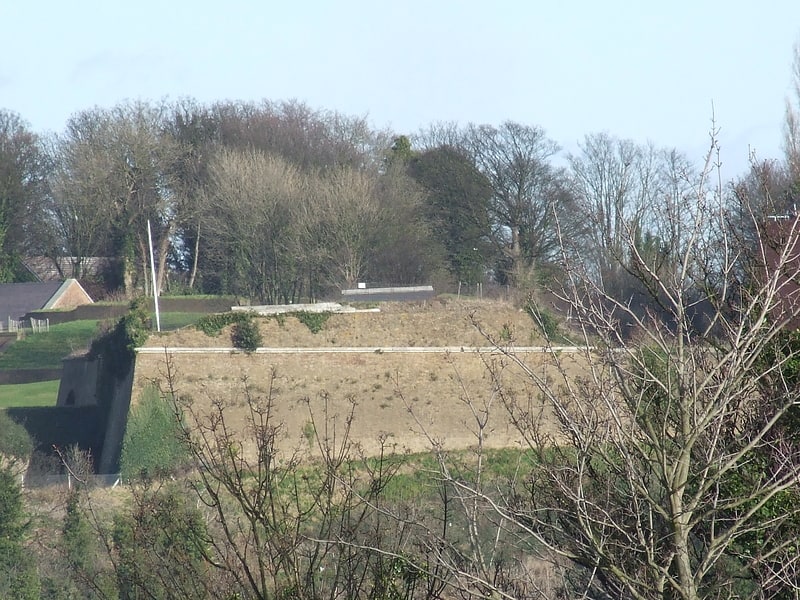
Tourist attraction in Chatham, England. Fort Amherst, in Medway, South East England, was constructed in 1756 at the southern end of the Brompton lines of defence to protect the southeastern approaches to Chatham Dockyard and the River Medway against a French invasion. Fort Amherst is now open as a visitor attraction throughout the year with tours provided through the tunnel complex.[9]
Address: Dock Road, ME4 4UB Chatham (Chatham)
Riverside Country Park

Nature preserve in Gillingham, England. Riverside Country Park is a large coastal public park, situated alongside the River Medway estuary between Gillingham and Rainham. The park covers about 100 hectares - approximately 247 acres. There are a variety of natural habitats within the park, including mudflats and salt marsh, ponds and reed-beds, grassland and scrub, which provide a haven for wildlife.[10]
Rochester Bridge
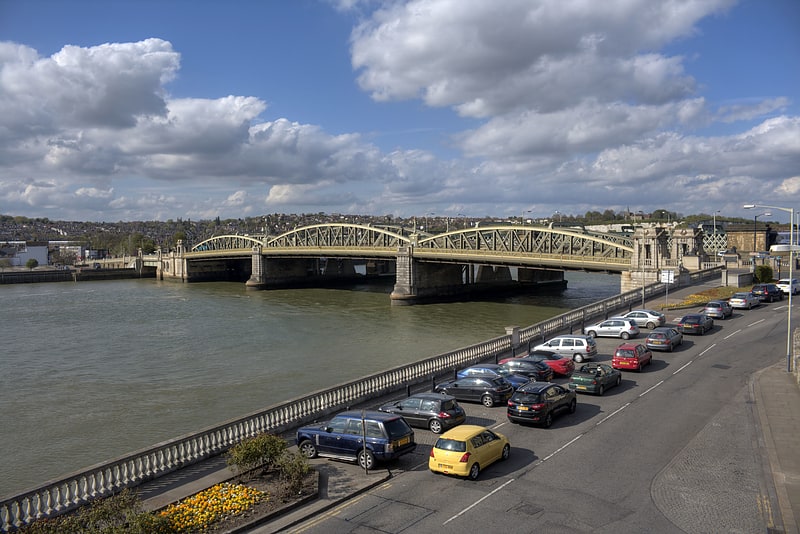
Bridge in the United Kingdom. Rochester Bridge in Rochester, Medway was for centuries the lowest fixed crossing of the River Medway in South East England. There have been several generations of bridge at this spot, and the current "bridge" is in fact four separate bridges: the "Old" bridge and "New" bridge carrying the A2 road, "Railway" bridge carrying the railway and the "Service" bridge carrying service pipes and cables. The bridge links the towns of Strood and Rochester in Medway. All except the railway bridge are owned and maintained by the Rochester Bridge Trust.[11]
Address: High St, ME 1 1 Rochester (Rochester West)
Chatham Naval Memorial

Tourist attraction in England. Chatham Naval Memorial is a large obelisk situated in the town of Chatham, Kent, which is in the Medway Towns. The memorial is a feature of the Great Lines Heritage Park. The huge expanse of the Great Lines was in its own right a layer of defence to protect Chatham Dockyard from attack.[12]
Address: 65 King's Bastion, ME7 1ND Gillingham (Chatham)
Rochester Guildhall
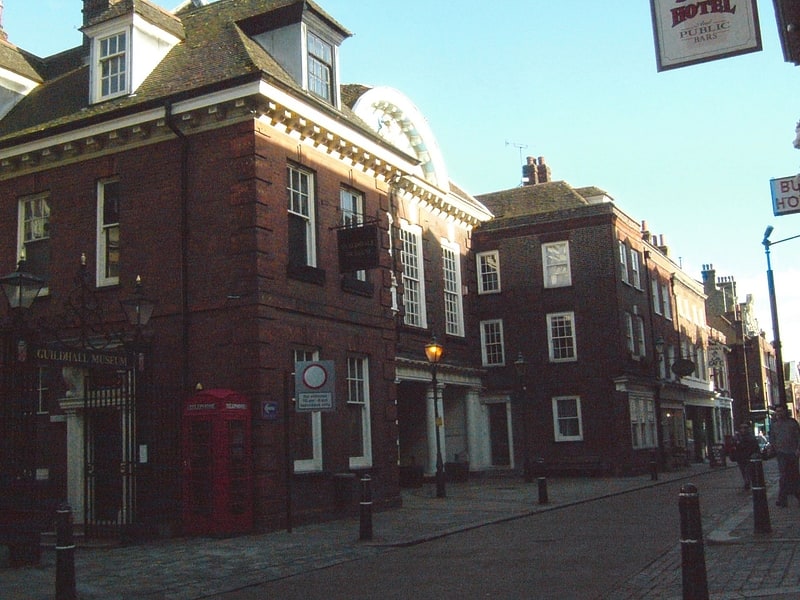
Museum in Rochester, England. The Rochester Guildhall is an historic building located in the High Street in Rochester, Kent, England. It is a Grade I listed building.[13]
Address: 17 High St, ME1 1PY Rochester (Rochester West)
Restoration House

Housing. Restoration House in Rochester, Kent in England, is a fine example of an Elizabethan mansion. It is so named after the visit of King Charles II on the eve of his restoration.
Charles had landed in Dover on 25 May 1660 and by the evening of the 28th arrived in Rochester. He was received by the Mayor and eventually retired for the night to the home of Colonel Gibbon. The following day Charles continued to London and was proclaimed King on 29 May, his 30th birthday. Although the home of Colonel Gibbon, the property was actually owned by Sir Francis Clerke (he was knighted during the visit), a fact which has led to confusion in the past.
Although essentially a private home, the house and garden are open to the public during the summer. The house is protected as a Grade I listed building.[14]
Address: 17-19 Crow Lane, ME1 1RF Rochester (Rochester West)
Royal Engineers Museum
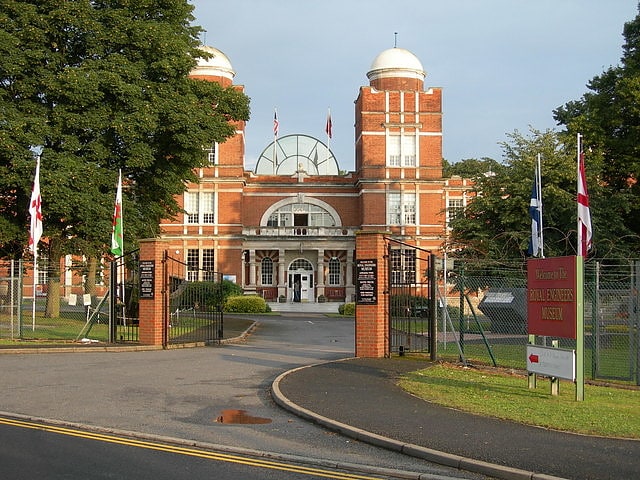
Museum in Gillingham, England. The Royal Engineers Museum, Library and Archive is a military engineering museum and library in Gillingham, Kent. It tells the story of the Corps of Royal Engineers and British military engineering in general.[15]
Address: Prince Arthur Rd, ME7 1UR Gillingham (Chatham)
St. Margaret's Church
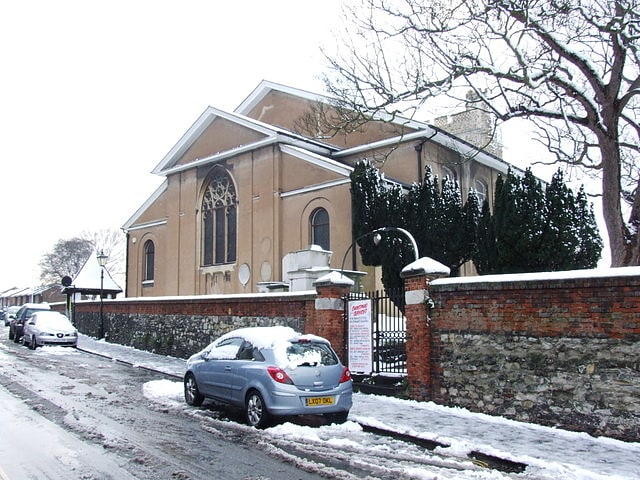
Church in Rochester, England. St Margaret's Church, Rochester is now a Chapel of Ease within the parish of St Peter with St Margaret, Rochester. Previously it was the parish church of St Margaret's Without. Thorpe records it as having previously been called St Margaret's in Suthgate. The building is a Grade II* listed building, English Heritage number 173172.[16]
Address: St Margaret's St, ME1 1UF Rochester (Rochester West)
Kent Police Museum
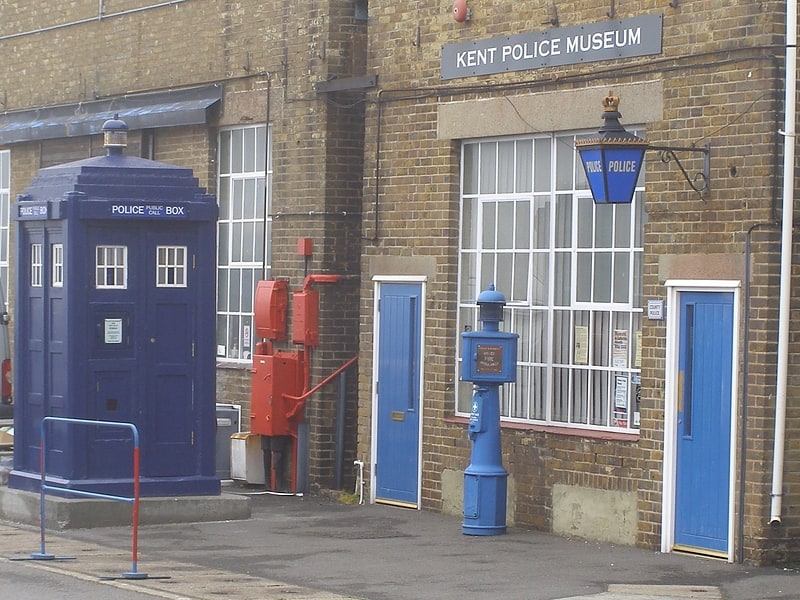
Museum in Faversham, England. The Kent Police Museum is located at Faversham Police Station in Kent, England. The museum was previously located within Chatham Dockyard. In September 2015 it relocated to temporary accommodation at the Kent Police Headquarters in Maidstone, and moved to Faversham on 8 Dec 2016. The museum is staffed by volunteers, and holds monthly events.
The museum includes displays on the history of the Kent County Constabulary which was established in 1857, as well as the fourteen earlier borough or city police forces, all of which had amalgamated with Kent County Constabulary by 1943.
The museum's memorabilia collections include, uniforms, equipment, medals, photographs, scenes of crime evidence, and occurrence and charge books. Its collection was started in the 1960s and the museum was first opened in 1973.
The museum is home to the world's largest working padlock.[17]
Fort Darnet
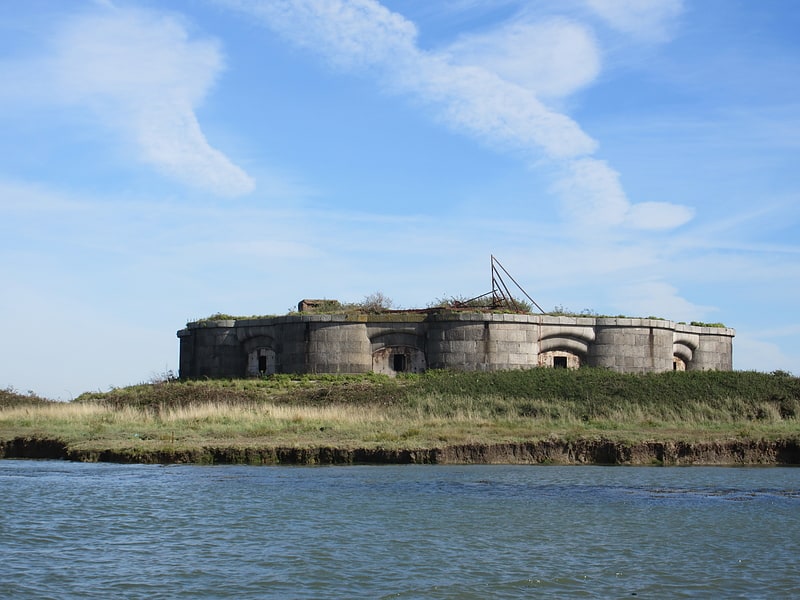
Fortress in the United Kingdom. Fort Darnet, is a nineteenth-century military installation on the River Medway in Kent, England, that formed part of the defences of Chatham Naval Dockyard. Fort Darnet, like its twin Hoo Fort 1 km upstream, was built on the recommendations of the 1859 Royal Commission on an island covering Pinup Reach, the inner navigable channel of the River Medway.
Building started on the island in 1870 and then finished in 1872. Originally designed for two tiers of guns mounted in a circle, with a boom strung between them, there were many problems with subsidence, and after extensive cost overruns the forts were completed in 1872 with one tier, and 11 guns : a mixture of 8 9-inch and 3 7-inch rifled muzzle-loaders. The boom was not implemented though there were plans to mine the channel if thought needed. It was originally designed for a garrison of up to 100 men.
The fort was used for gunnery practice until one of the guns cracked in its casemate, as reported in ‘The Chatham Observer’ on 25 January 1879.
The forts were never used in anger, and were decommissioned before the First World War. In the Second World War the fort was used as an observation post, with platforms and pillboxes built on top. The fort is still in fair condition, however the magazine level is flooded. The island can be freely visited by boat, though the landing is muddy.
Up to the 1980s, the island was used for picnicking and other leisure pursuits.
It is scheduled under the Ancient Monuments and Archaeological Areas Act 1979.[18]
Tower Hill to Cockham Wood
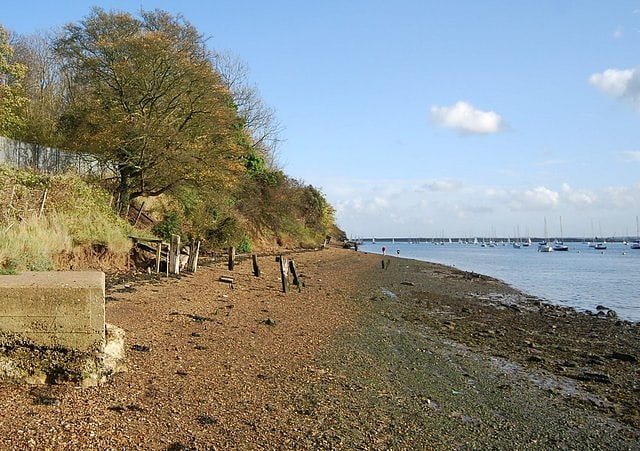
Tower Hill to Cockham Wood is a 47.8-hectare biological and geological Site of Special Scientific Interest on the northern outskirts of Rochester in Kent. It contains two Geological Conservation Review sites.
This site contains typical woodland on Tertiary deposits, and sandy areas which have diverse invertebrates, including seven nationally rare bees and wasps. Upnor Quarry exposes a complete sequence of Tertiary rocks.
There are public footpaths through the site, but some parts are private land.[19]
Old Brook Pumping Station

Museum in Chatham, England. Old Brook Pumping Station, was a water pumping station operating in Chatham, Kent from 1929 until 1980. It now survives as a working museum.[20]